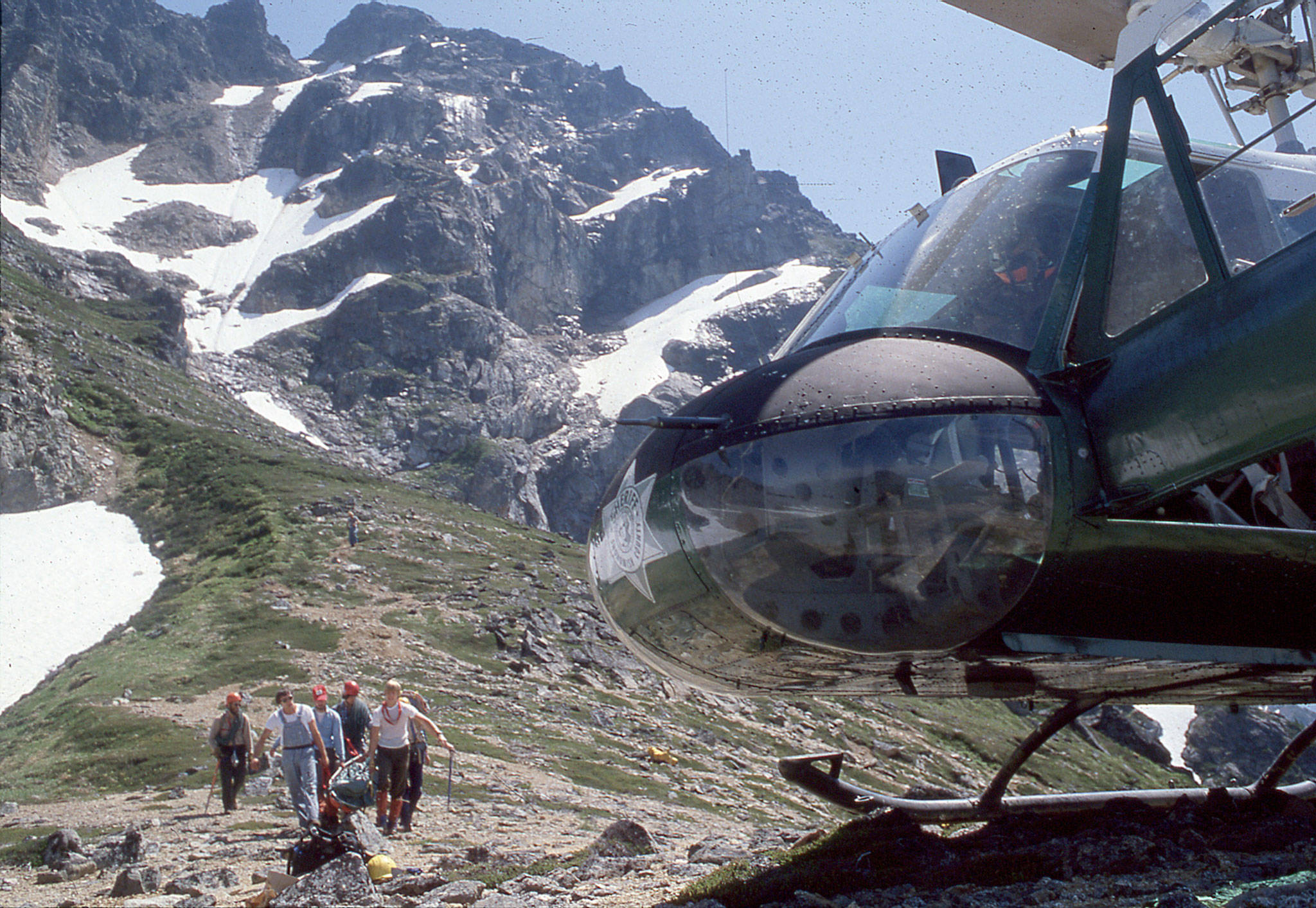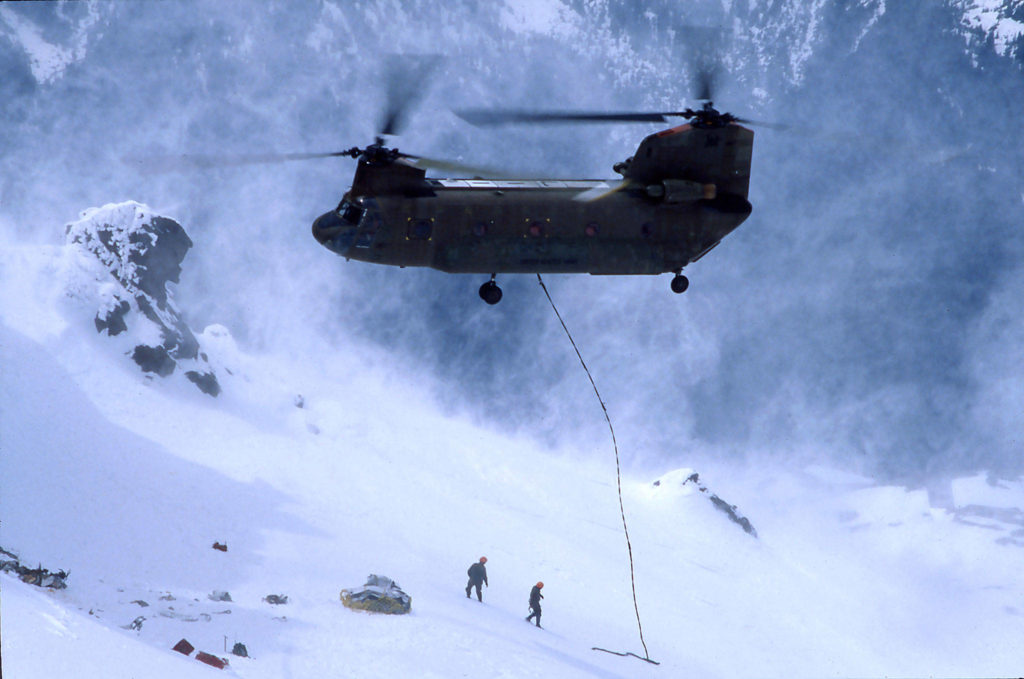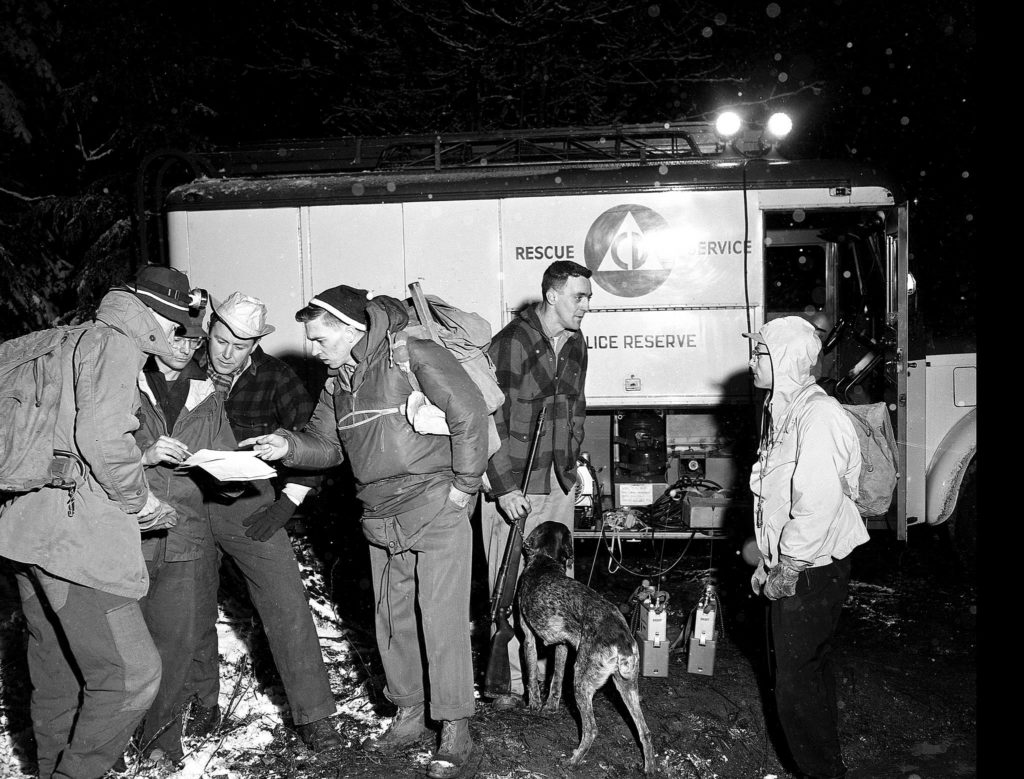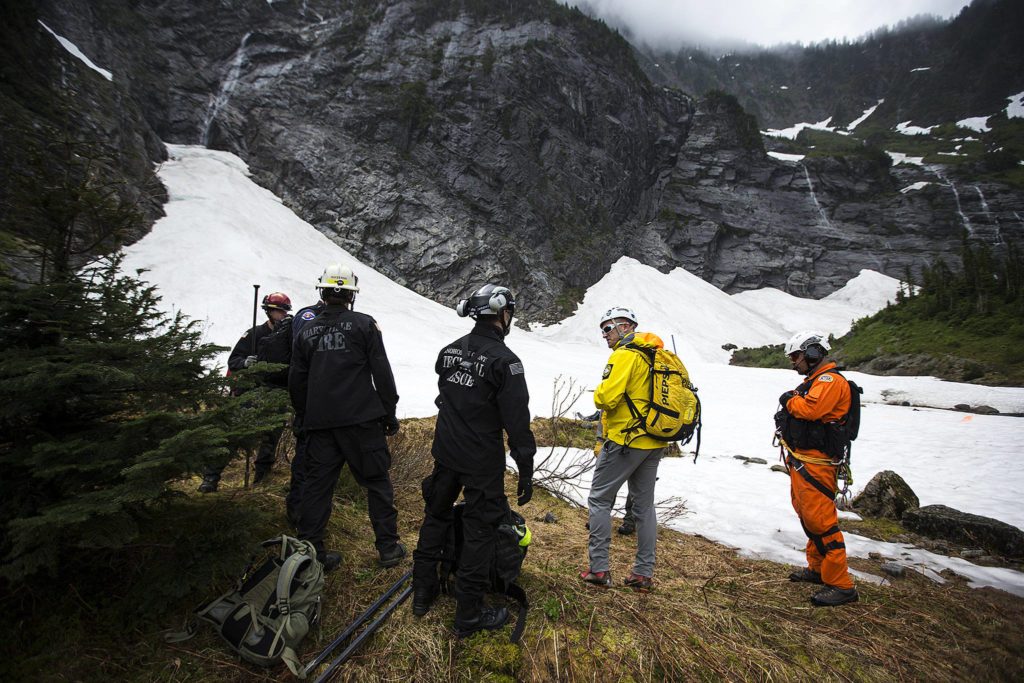SNOHOMISH — He knows the wilderness is not picky.
Anyone could slip on snow.
Dave Schwarzmiller veered from the trail leading down Mount Pilchuck. Wind gusts pushed the snow sideways. He was scouting out a safer route for his search and rescue team to take back to the camp where they were coordinating the operation.
Schwarzmiller stepped too quickly and fell. He couldn’t make it down the hillside.
Ken Lakey, another volunteer, helped his friend walk the remaining three miles.
“He was the best crutch I ever had,” Schwarzmiller, now 92, said.
Snohomish County Volunteer Search and Rescue celebrates its 50th anniversary Saturday. The county officially proclaimed Aug. 19 a day to honor the sheriff’s office and the more than 300 volunteers who help people find their way home.
Schwarzmiller joined Search and Rescue in the 1960s. Lakey, who is now 64, signed up as a teen in 1971.
Crews have searched mountains, forests, rivers and cities.
The organization began after a Marysville teen got lost on Mount Pilchuck. He was deer hunting with this father. The teen didn’t have a hunting license, so he trailed about 100 feet behind.
At some point, the boy lost sight of his father.
About 200 people marched up the mountain through 40 mph winds and pelting rain. They recruited loggers and hunters who knew the land.
The Marysville boy spent two nights in the woods, and was brought home safe.
“This group of people realized there was a need for this, so they formed the Marysville Search and Rescue” which eventually became the countywide group, said Lakey, a former president of the organization. Search and Rescue was officially incorporated in 1967.
Early on, money was tight.
They ferried volunteers to missions in an old military truck. The drive up Getchell Hill in Marysville was slow going, Lakey said. By the time the rig neared the top, it maxed out at about 25 mph.
They pushed on with the emergency lights and sirens.
Schwarzmiller initially hadn’t planned to join Search and Rescue.
In the 1960s, he ran a store in Snohomish. He sold snowmobiles, which weren’t all that popular with the locals.
“What kept us in business is little rubber boots,” Schwarzmiller said.
They cost about $3 a pair.
He had decided to take a snowmobiling class, and later led a team of riders in Search and Rescue. Snowmobiles were used more frequently in missions before helicopters.
The organization bought a helicopter for $210 from military surplus. In August 1980, it crashed.
Volunteers at the time had been searching for a geology professor who taught at Western Washington University. He’d hiked up Glacier Peak to study hot springs, and ended up climbing a rocky bluff. A boulder shook loose and fell. The man tumbled several hundred feet down a hillside.
He broke his hip.
Rescuers carried the man into the helicopter. As they took off, the chopper flipped. They were upside down over a massive crevasse. Rotor blades hit the side of the mountain and broke off.
Lakey remembers hearing Schwarzmiller call “mayday” over the radio.
No one was hurt in the crash, but they did have to camp out overnight until the Navy could send help the next morning.
You don’t often read about people in accidents like that who survive, said Sgt. Danny Wikstrom who oversees search and rescue operations for the Snohomish County Sheriff’s Office.
They laugh about it now.
“We had good times. Gee whiz,” Schwarzmiller said.
Wikstrom often sees volunteers walk down a mountain after a rescue, hop in their cars and head to work.
“We can’t pay the volunteers, but we can whole-heartedly say they are respected and valued,” Wikstrom said.
Heidi McKeon, 51, and her husband are familiar with unpredictable schedules.
The Marysville couple has cancelled plans and postponed family dinners.
“We basically just put the dinner in the oven and close the oven doors so the cats didn’t get it, and head out the door,” McKeon said.
She joined Search and Rescue in 2008, a couple weeks after crews saved her son. The 16-year-old had been stranded on Three Fingers Mountain south of Darrington.
McKeon and her husband spent a rainy August night in a Suburban parked at base camp. Meanwhile, at the top of the mountain, it was snowing. McKeon’s son and his friends found shelter thousands of feet up.
The rescue took about 20 hours, but they were safe.
McKeon attended her first meeting with Search and Rescue’s Operations Support Unit in September of that year.
“Pay it back, pay it forward,” McKeon said. “People came from six or seven different counties, and that was our introduction to Search and Rescue other than what you see on TV. That was something we wanted to do.”
McKeon, who works part-time at a dog grooming business, has since become a team leader and serves on the organization’s board. She trains new volunteers, records radio traffic, maps search efforts and maintains the paperwork.
When a mudslide in Oso killed 43 people, McKeon worked for 28 days. She watched the helicopters take off and bring people back.
“At this point, there is nothing else I’d rather do,” McKeon said. “Even when there’s tragedy and we have to bring somebody home, we’re bringing closure to a family.”
Most missions end with relief, Lakey said.
He headed out to the woods to help a family more than 20 years ago. They had been camping near a river and their child, who was about 3 or 4, went missing.
They found little tracks leading toward the water.
“Everybody was thinking the worst,” Lakey said.
Crews kept expanding their search area.
About a mile down the road, they saw the toddler curled up and sleeping soundly.
“We found people,” Schwarzmiller said. “We didn’t quit until we found them.”
Caitlin Tompkins: 425-339-3192; ctompkins@heraldnet.com.
50th anniversary event
Help celebrate Snohomish County Volunteer Search and Rescue’s 50th Anniversary. The event is scheduled from 10 a.m. to 2 p.m. Saturday at Taylor’s Landing, 5506 Old Machias Road, Snohomish.
Check out the helicopters, rescue boats and dog demonstrations.
More info: www.scvsar.org
Talk to us
> Give us your news tips.
> Send us a letter to the editor.
> More Herald contact information.




























